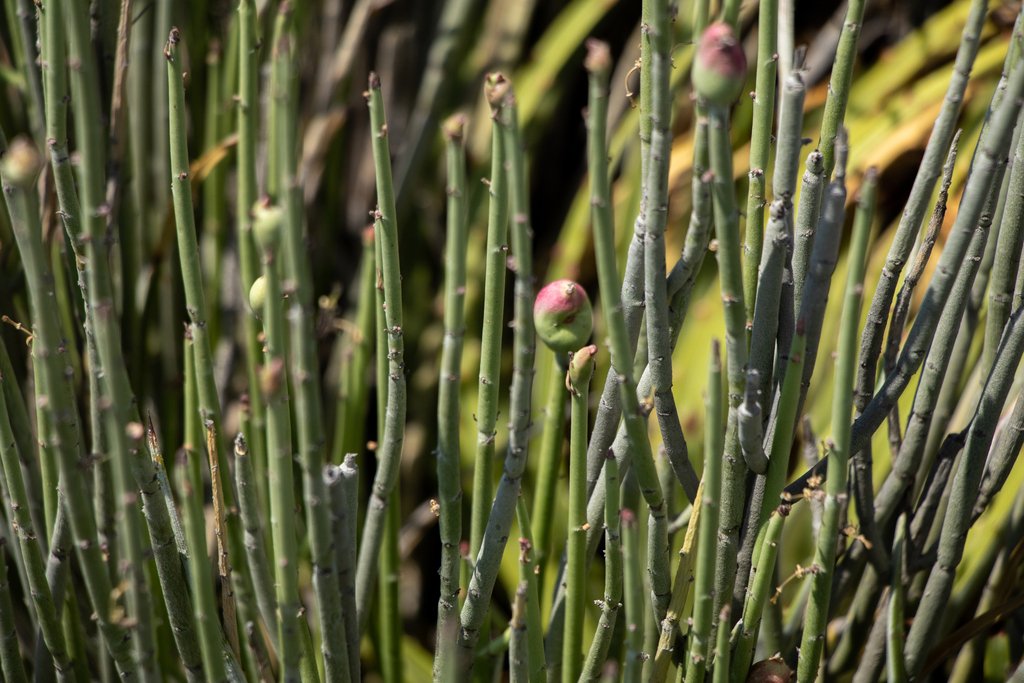Euphorbia antisyphyllitica
Candelilla
Family: Euphorbiaceae
Succulent, virtually leafless plant with pencil-shaped foliage that will be greenish in protected, shadier spots, or white/grey in full sun. Stems can be reddish on the ends in winter weather, and milky sap results when stems are broken. Plants produce a waxy coat in full sun which protects them from the intense solar radiation. Plants are generally 1-2’ tall, spreading in clusters almost indefinitely. Small creamy white flowers with red centers are produced in clusters following spring and summer rains. Sometimes flowers are followed by small capsules. The species is monoecious (individual flowers are either male or female, but both sexes can be found on the same plant) and is pollinated by small insects.
Plant in full to part sun, or even reflected heat. Plants can handle conditions with very low water but some extra warm season irrigation helps plants grow faster and look better. Provide good drainage. Cold hardy to 0°F but may suffer some damage at 10-15°F.
Candelilla has been important economically. A high-grade wax is produced by boiling the plant in large vats. The wax has many uses, in making candles, soap, ointments, sealing wax, phonograph records, insulation material, shoe polish, floor polish, waterproofing, and lubricants. Though the use of this wax was originally replaced by petroleum based synthetic substances, there has been a revival of the use of this wax for various purposes like cosmetics and some food uses. The white sap of E. antisyphilitica was historically used in Mexico to treat sexually-transmitted diseases (this is what the species name is referencing). The plant has been over-harvested over the years in the wild and is now somewhat scarce in the wild.
This species is native too the Trans-Pecos of Texas and southern New Mexico in the United States as well as Chihuahua, Coahuila, Hidalgo, and Querétaro in Mexico.
The name for the genus is derived from Euphorbus, the Greek physician of King Juba II of Numidia and later of Mauritania. In 12 B.C. King Juba named a cactus-like plant he found in the Atlas Mountains after his physician and later Carl Linnaeus assigned the name Euphorbia to the entire genus. The species name is in reference to its use as a treatment for siphyllus.




